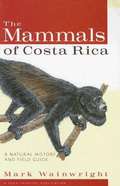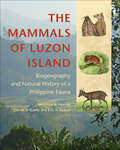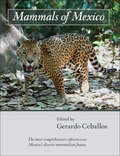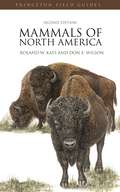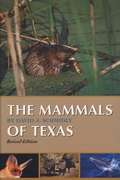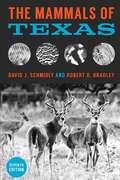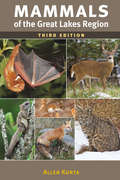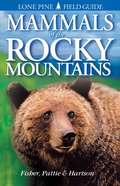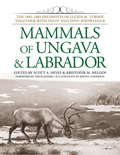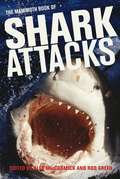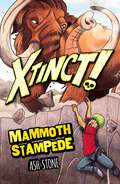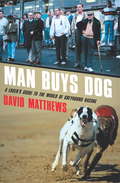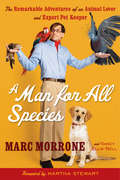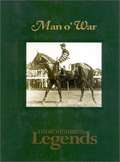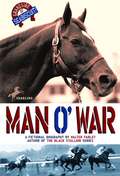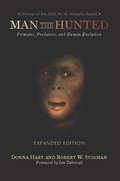- Table View
- List View
The Mammals of Costa Rica: A Natural History and Field Guide
by Mark WainwrightThis guide offers accounts of all of Costa Rica's readily identifiable terrestrial and freshwater mammals. Descriptions include key identification features, range maps, local folklore and mythology, and information on natural history and conservation. The guide provides an entry point into a general study of tropical ecology and conservation for both first-time and experienced visitors to Costa Rica and the American tropics, as well as for naturalists, students, and researchers. Wainwright is a naturalist and instructor for tropical ecology courses in Costa Rica.
The Mammals of Luzon Island: Biogeography and Natural History of a Philippine Fauna
by Lawrence R. Heaney Danilo S. Balete Eric A. RickartA beautifully illustrated guide to the complete mammalian biodiversity of the Philippines’ largest island.Revealing the astounding mammalian diversity found on the largest Philippine island, The Mammals of Luzon Island is a unique book that functions both as a field guide and study of tropical fauna. The book features 120 fully illustrated species profiles and shows how the mammals fit into larger questions related to evolution, ecology, and biogeography. Luzon’s stunning variety of mammals includes giant fruit-eating bats; other bats so small that they can roost inside bamboo stems; giant plant-eating rodents that look like, but are not, squirrels; shrews that weigh less than half an ounce; the rapidly disappearing Philippine warty pig; and the long-tailed macaque, Luzon’s only nonhuman primate. While celebrating Luzon’s remarkably rich mammal fauna, the authors also suggest conservation strategies for the many species that are under threat from a variety of pressures. Based on a century of accumulated data and fifteen years of intensive study, The Mammals of Luzon Island delivers a message that will appeal equally to scientists, conservationists, and ecologically minded travelers.
Mammals of Mexico
by Gerardo CeballosThe most comprehensive reference on Mexico's diverse mammalian fauna.Mammals of Mexico is the first reference book in English on the more than 500 types of mammal species found in the diverse Mexican habitats, which range from the Sonoran Desert to the Chiapas cloud forests. The authoritative species accounts are written by a Who’s Who of experts compiled by famed mammalogist and conservationist Gerardo Ceballos.Ten years in the making, Mammals of Mexico covers everything from obscure rodents to whales, bats, primates, and wolves. It is thoroughly illustrated with color photographs and meticulous artistic renderings, as well as range maps for each species. Introductory chapters discuss biogeography, conservation, and evolution. The final section of the book illustrates the skulls, jaws, and tracks of Mexico’s mammals. This unparalleled collection of scientific information on, and photographs of, Mexican wildlife belongs on the shelf of every mammalogist, in public and academic libraries, and in the hands of anyone curious about Mexico and its wildlife.
Mammals of North America: Second Edition (Princeton Field Guides #58)
by Roland W. Kays Don E. WilsonThe best field guide to North American mammalsThe best-selling field guide that "sets new standards" (New Scientist) and "makes all other field guides for mammals of the United States. . . and Canada obsolete" (Journal of Mammalogy) is now even better. Covering 20 species recognized since 2002 and including 13 new color plates, this fully revised edition of Mammals of North America illustrates all 462 known mammal species in the United States and Canada—each in beautiful color and accurate detail. With a more up-to-date species list than any other guide, improved facing-page descriptions, easier-to-read distribution maps, updated common and scientific names, and track and scat illustrations, this slim, light, and easy-to-use volume is the must-have source for identifying North American mammals.Roland Kays and Don Wilson have scoured the technical literature to pull out the key differences between similar species, and illustrated these whenever possible, making the guide useful to amateur naturalists and professional zoologists alike. Casual animal watchers will appreciate the overview of mammal diversity and the tips on identifying animals they can spy in their binoculars, while scientists will appreciate the exacting detail needed to distinguish similar species, including illustrations of shrew teeth, bat toes, and whale dorsal fins.The best-illustrated and easiest-to-use field guide to North American mammalsBeautiful and accurate color illustrations of all 462 mammals found in the United States and Canada—including 20 species recognized since 2002112 color plates—including 13 new onesKey identification information—fully revised—on facing pagesThe most current taxonomy/species listFully revised, easy-to-read range mapsIllustrations of tracks, scat, and whale and dolphin dive sequences
The Mammals of Texas
by David J. SchmidlyThe Mammals of Texas has been the standard reference since the first edition was authored by William B. Davis in 1947. Revised several times over the succeeding decades, it remains the most authoritative source of information on the mammalian wildlife of Texas. This new edition has been thoroughly updated and expanded from the previous one in 1994. Of particular importance are the changes it records in species status and distribution. New materials in this edition include lists of subspecies, a brief description of the conservation status of each species, and an expanded introductory section that discusses historical changes in Texas mammals and the history of mammalogy in Texas. The book also contains a thorough overview of the mammals of Texas, abundant photographs and drawings, distribution maps, physical descriptions, and life histories for 184 species of mammals.
The Mammals Of Texas
by David J. Schmidly Robert D. Bradley“[This book] easily fills the role of both a field guide and a desk reference, and is written in a style that appeals to the professional biologist and amateur naturalist alike. . . . [It] should prove useful to anyone with an interest in the mammal fauna of Texas or the southern Great Plains.” —Prairie Naturalist <p><p> The Mammals of Texas has been the standard reference since the first edition was coauthored by William B. Davis and Walter P. Taylor in 1947. Revised several times over the succeeding decades, it remains the most authoritative source of information on the mammalian wildlife of Texas, with physical descriptions and life histories for 202 species, abundant photographs and drawings, and distribution maps. <p><p> In this new edition, David J. Schmidly is joined by one of the most active researchers on Texas mammals, Robert D. Bradley, to provide a thorough update of the taxonomy, distribution, and natural history of all species of wild mammals that inhabit Texas today. Using the most recent advances in molecular biology and in wildlife ecology and management, the authors include the most current information about the scientific nomenclature, taxonomy, and identification of species, while also covering significant advances in natural history and conservation.
Mammals of the Great Lakes Region, 3rd Ed.
by Allen KurtaNow in an extensively revised 3rd edition, Mammals of the Great Lakes Region has been an essential reference for countless amateur and professional naturalists since 1957. Easily tucked into a backpack and carried into the field, this heavily illustrated guidebook offers detailed information on 83 species, including each mammal’s appearance, behavior, and natural history, along with an explanation of its scientific name. Species accounts are accompanied by new color photographs plus fully updated distribution maps showing the geographic range in the Great Lakes region and in North America. A thorough introduction outlines the environmental factors that affect the distribution and abundance of mammals in Great Lakes ecosystems and discusses the impacts of current human activities, including introduction of diseases and climate change. There is also a section on preparing captured specimens for research or teaching, as well as user-friendly keys and quick reference tables to physical measurements and life history data. Brand new in this edition, the book also features detailed illustrations of the tracks of commonly found mammals to assist with year-round identification. Providing the most up-to-date information on mammals in the Great Lakes basin, this book belongs on the shelves of teachers, students, naturalists, and professional biologists throughout the region.
Mammals of the Rocky Mountains
by Chris Fisher Don Pattie Tamara HartsonThis fascinating and readable textbook describes these mammals in detail-what they look like, what they eat, where they live, what they like to do. Since otters intrigue me, here's a sample from the pages about them. Northern River Otter Lontra canadensis It may seem to be too good to be true, but all those playful characterizations of the Northern River Otter are founded on truth. Otters often amuse themselves by rolling about, sliding, diving or "body surfing," and they may also push and balance floating sticks with their noses or drop and retrieve pebbles for minutes at a time. They seem particularly interested in playing on slippery surfaces-they leap onto the snow or mud with their forelegs folded close to their bodies for a streamlined toboggan ride. Unlike most members of the weasel family, river otters are social animals, and they will frolic together in the water and take turns sliding down banks. With their streamlined bodies, rudder-like tails, webbed toes and valved ears and nostrils, river otters are well adapted for aquatic habitats. Even when they emerge from the water to clamber over rocks, there is a serpentine appearance to their progression. The large amounts of playtime they seem to have results from their efficiency at catching prey when it is plentiful. Although otters generally cruise along slowly in the water by paddling with all four feet, they can sprint after prey with the ease of a seal whenever hunger strikes. When an otter swims quickly, it chiefly propels itself with vertical undulations of its body, hindlegs and tail. Otters can hold their breath for as long as five minutes, and, if so inclined, they could swim the breadth of a small lake without surfacing. ... In the past, the Northern River Otter's thick, beautiful, durable fur led to excessive hunting. This file should make an excellent embossed braille copy.
The Mammals of the Southern African Sub-region
by John D. Skinner Christian T. ChimimbaThis comprehensive volume covers all mammals that occur naturally on the African mainland south of the Cunene and Zambezi rivers, and also in the subregion's coastal waters. Extensively revised and updated for the new edition, it now includes the latest data from from mammal research in southern Africa along with the radical taxonomic changes across all levels of mammalian classification. Containing contributions from specialists on each mammalian order, each species description has been reviewed by a range of independent and internationally recognised authorities. Along with the latest taxonomic information, the distribution maps and illustrations have been updated and redrawn, several new colour plates have been added, and the whole design has been enhanced to aid access to key information. This is the most comprehensive and up-to-date survey of southern-African mammals and forms an essential reference for zoologists, evolutionary biologists and anyone wanting an overview of the region's wildlife.
Mammals of Ungava and Labrador: The 1882-1884 Fieldnotes of Lucien M. Turner together with Inuit and Innu Knowledge
by Tim Flannery Scott A. Heyes Bryony Anderson Kristofer M. HelgenIn 1882 the Smithsonian Institution Arctic scientist, Lucien McShan Turner, traveled to the Ungava District that encompasses Northern Quebec and Labrador. There he spent 20 months as part of a mission to record meteorological data for an International Polar Year research program. While stationed at the Hudson's Bay Company Trading Post of Fort Chimo in Ungava Bay, now the Inuit community of Kuujjuaq, he soon tired of his primary task and expanded his duties to a study of the natural history and ethnography of the Aboriginal peoples of the region. His ethnography of the Inuit and Innu people was published in 1894, but his substantial writings on natural history never made it to print. Presented here for the first time is the natural history material that Lucien M. Turner wrote on mammals of the Ungava and Labrador regions. His writings provide a glimpse of the habits and types of mammals that roamed Ungava 125 years ago in what was an unknown frontier to non-Inuit and non-Innu people.
The Mammoth Book of Shark Attacks
by Alex MacCormickThe biggest-ever selection of first-hand accounts and news reports of shark attacks, both recent and historical, shows how sharks are masters of the ocean and how we enter their domain at our own risk. Think you're safe in the Med? Read about the Great Whites that thrive near holiday beaches. Think you're safe in large groups? Read about the sinking of the USS Indianapolis in 1945 when hundreds of sailors floated for days in shark-infested waters, being picked off one-by-one. Think you're safe at home? Read about the 69-year-old man, taking his regular evening swim, jumping off his backyard dock straight into the mouth of a bull shark. Many more extraordinary and gruesome accounts, including the shark-boat skipper who slit open the belly of a 360-kg tiger shark only to have a human head, pelvis, and arm come tumbling out, provide horrific and moving tales of shark encounters. The courage of survivors and those who have risked their lives to save shark attack victims is truly inspirational. Where can you find sharks? Features on different shark species with illustrations, fact boxes and maps show where they lurk around the world. Also included are a selection of full-colour photographs and special sections on the life cycle of a shark, how to avoid a shark attack and how to survive one.
Mammoth Book of Shark Attacks, The (Mammoth Books #395)
by Alex MacCormickThe biggest-ever selection of first-hand accounts and news reports of shark attacks, both recent and historical, shows how sharks are masters of the ocean and how we enter their domain at our own risk. Think you're safe in the Med? Read about the Great Whites that thrive near holiday beaches. Think you're safe in large groups? Read about the sinking of the USS Indianapolis in 1945 when hundreds of sailors floated for days in shark-infested waters, being picked off one-by-one. Think you're safe at home? Read about the 69-year-old man, taking his regular evening swim, jumping off his backyard dock straight into the mouth of a bull shark. Many more extraordinary and gruesome accounts, including the shark-boat skipper who slit open the belly of a 360-kg tiger shark only to have a human head, pelvis, and arm come tumbling out, provide horrific and moving tales of shark encounters. The courage of survivors and those who have risked their lives to save shark attack victims is truly inspirational. Where can you find sharks? Features on different shark species with illustrations, fact boxes and maps show where they lurk around the world. Also included are a selection of full-colour photographs and special sections on the life cycle of a shark, how to avoid a shark attack and how to survive one.
Mammoth Cave National Park: Reflections
by Raymond KlassGo deeper into this national treasure with “a sumptuous collection of photographs [that] captures the wonderment and majesty of the cave system” (Louisville Courier-Journal).Kentucky’s Mammoth Cave National Park is home to the world's longest cave system, boasting over 350 miles of explored and mapped passageways—and geologists estimate that there could be many more miles of this vast subterranean world that remain unexplored. In addition to the renowned Mammoth Cave, the park also includes over 50,000 acres of hills, streams, and forests with nearly seventy miles of scenic trails.The Green River, which plays an integral role in the cave’s ecosystem, winds through this impressive landscape. As an artist-in-residence at the park, nature photographer Raymond Klass was granted access to the cave and the surrounding wilderness. While living at the park, he took thousands of photographs of famous cave formations, such as Frozen Niagara and the Drapery Room, as well as scenery and wildlife not often seen by the general public. Mammoth Cave National Park: Reflections is a record of Klass’s unique visual exploration of the above- and belowground ecosystems within the park.With more than 100 dramatic full-color photographs, accompanied by Klass’s commentary and extracts from the journal he kept while living and working in the park, this book captures the sights and surprises of the vast underground world of the cave system—its labyrinths and mineral formations, remnants of human visitors and gypsum miners, streams and rivers hundreds of feet below the surface, and more.“The detail in the photographs lets the reader absorb the wonder of Mammoth Cave perhaps more than a simple day trip to the park could ever provide.” —Kentucky Living
Mammoth Stampede: Book 4 (Xtinct! #4)
by Ash StoneA giant woolly mammoth comes back to life in this action-packed adventure story.Time is running out! Barron Fox's hunting lodge is opening soon, and Jeevan discovers that he's planning a very big surprise for his guests - a woolly mammoth, brought back to life for them to hunt!If the lodge opens, the animals in the forest will be in danger too. Can Jeevan and his friends launch a daring rescue mission that tramples over Fox's plans?Perfect for fans of Beast Quest, Deadly 60 and Jurassic Park, these action-packed adventures will inspire readers to help save endangered species and combat extinction.
Mammoths and the Environment
by Valentina V. UkraintsevaThe study of fossilised remains of herbivorous animals, particularly those rare findings with well-preserved gastrointestinal tracts filled with plant remains, is crucial to our understanding of the environment in which they lived. Summarising thirty years of research, Ukraintseva presents evidence on plants once eaten by Siberia's major herbivorous mammals. The collection of pollen and plant spores from food remains sheds light on the vegetation of these ancient habitats, enabling researchers to reconstruct local floras of the time. This also promotes further insight into the causes of the extinction of various species due to changing environmental conditions and food availability. Providing a history of the research undertaken, the book also includes specific chapters on the Cherski horse and bison, along with the vegetation and climate of Siberia in the late Anthropogene period, making it a lasting reference tool for graduate students and researchers in the field.
Man Buys Dog
by David MatthewsDavid Matthews, author of the critically acclaimed LOOKING FOR A FIGHT, needed a fresh challenge after he had recovered from being a professional boxer. Drawn to the slightly shady appeal of greyhound racing, and not averse to making some easy money, he decided to learn the tricks of the trade from the inside and buy a greyhound. Unfortunately Zussies Boy, aka Kevin, turned out to be something of a dud, and Matthews soon found out the hard way that in the world of greyhound racing there is only one winner - the hare.
Man Buys Dog
by David MatthewsDavid Matthews, author of the critically acclaimed LOOKING FOR A FIGHT, needed a fresh challenge after he had recovered from being a professional boxer. Drawn to the slightly shady appeal of greyhound racing, and not averse to making some easy money, he decided to learn the tricks of the trade from the inside and buy a greyhound. Unfortunately Zussies Boy, aka Kevin, turned out to be something of a dud, and Matthews soon found out the hard way that in the world of greyhound racing there is only one winner - the hare.
A Man for All Species: The Remarkable Adventures of an Animal Lover and Expert Pet Keeper
by Nancy Ellis-Bell Marc MorroneIn A Man for All Species, animal expert Marc Morrone weaves thrilling, inspiring, strange, and often hilarious experiences with practical advice gleaned over his forty-year career, revealing a world of adventure and anguish, humor and heart, that every pet owner and animal lover will recognize.
Man Meets Dog
by Konrad LorenzIn this wonderful book, the famous scientist and best-selling author, Konrad Lorenz, 'the man who talked with animals', enlightens and entertains us with his illustrated account of the unique relationship between humans and their pets. Displaying Lorenz's customary humanity and expert knowledge of animals, Man Meets Dog is also a deeply personal and entertaining account of his relationships with his own four-legged friends. With charming sketches on almost every page, Man Meets Dog offers a delightful insight into animal and human thinking and feeling. An essential companion for all lovers of dogs (and cats!).
Man o' War (Thoroughbred Legends #1)
by Edward L. BowenThe life and times of Man o' War, whose legend continues to grow more than half a century after his death, are chronicled in this exhaustive biography. Man o' War was bred in Kentucky and quickly became a sports hero through such amazing feats as winning the Belmont Stakes by more than 20 lengths and the Lawrence Realization by 100 lengths. He won an astounding 20 of 21 career races and his descendants continue to influence the Thoroughbred breed today. A wonderful collection of 43 historical photographs are found within the pages of this title. It is a must for every fan of Man o' War and the general racing enthusiast alike! Man o' War was ranked No. 1 in The Blood-Horse magazine's list of the Top 100 Racehorses of 20th Century.
Man o' War: A Legend Like Lightning
by Dorothy OursDorothy Ours's Man o' War: A Legend Like Lightning tells the fascinating true story of one of the greatest racehorses who ever lived.His trainer said that managing him was like holding a tiger by the tail. His owner compared him to "chain lightning." His jockeys found their lives transformed by him, in triumphant and distressing ways. All of them became caught in a battle for honesty.Born in 1917, Man o' War grew from a rebellious youngster into perhaps the greatest racehorse of all time. He set such astonishing speed records that The New York Times called him a "Speed Miracle." Often he won with so much energy in reserve that experts wondered how much faster he could have gone. Over the years, this and other mysteries would envelop the great Man o' War.The truth remained problematic. Even as Man o' War--known as "Big Red"--came to power, attracting record crowds and rave publicity, the colorful sport of Thoroughbred racing struggled for integrity. His lone defeat, suffered a few weeks before gamblers fixed the 1919 World Series, spawned lasting rumors that he, too, had been the victim of a fix.Tackling old beliefs with newly uncovered evidence, Man o' War: A Legend Like Lightning shows how human pressures collided with a natural phenomenon and brings new life to an American icon. The genuine courage of Man o' War, tribulations of his archrival, Sir Barton (America's first Triple Crown winner), and temptations of their Hall of Fame jockeys and trainers reveal a long-hidden tale of grace, disgrace, and elusive redemption.
Man Overboard! (The Mystery Files of Shelby Woo #13)
by Brad Strickland Barbara StricklandShelby goes whale-watching aboard the Nantucket Nell on the very day money disappears from the sight-seeing company's safe. Soon, the prime suspect comes out of hiding and teams up with Shelby to prove his innocence -- and surface with the truth.
Man O'War (Black Stallion)
by Walter FarleyWalter Farley, with his seamless storytelling, chronicles the life story of the horse most horse lovers continue to regard as America's greatest Thoroughbred. Through the eyes of a fictional stableboy, Danny Ryan, Farley makes the intricate world of the "Sport of Kings" accessible and exciting to horse lovers and racing fans of all ages. Book jacket.
Man the Hunted
by HartAlthough "Man the Hunter” is a popular description of our ancestry, the central importance of hunting is firmly fixed only in the archeological record of relatively recent human history. Man the Huntedargues that primates, including the earliest members of the human family, have evolved not as hunters but as the prey of any number of predators, including wild cats and dogs, hyenas, snakes, crocodiles, and even birds of prey. Eyewitness accounts, data collected by the authors, and the published reports of naturalists establish the astonishing extent to which living monkeys, lemurs, apes, and even humans fall victim to a wide variety of predators, some of which even specialize in the consumption of primates. Additionally, the fossil record demonstrates that primates have been prey for millions of years, a fact that necessarily shaped the evolution of our earliest ancestors in body and behavior. Skillfully combining information from a number of lines of evidence,Man the Huntedcasts an entirely new light on the natural history of primates and the evolution of fossil and modern humans.
